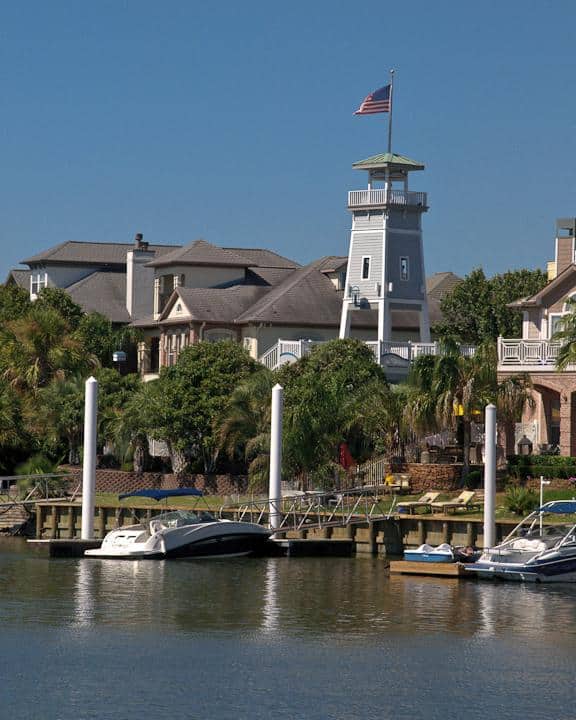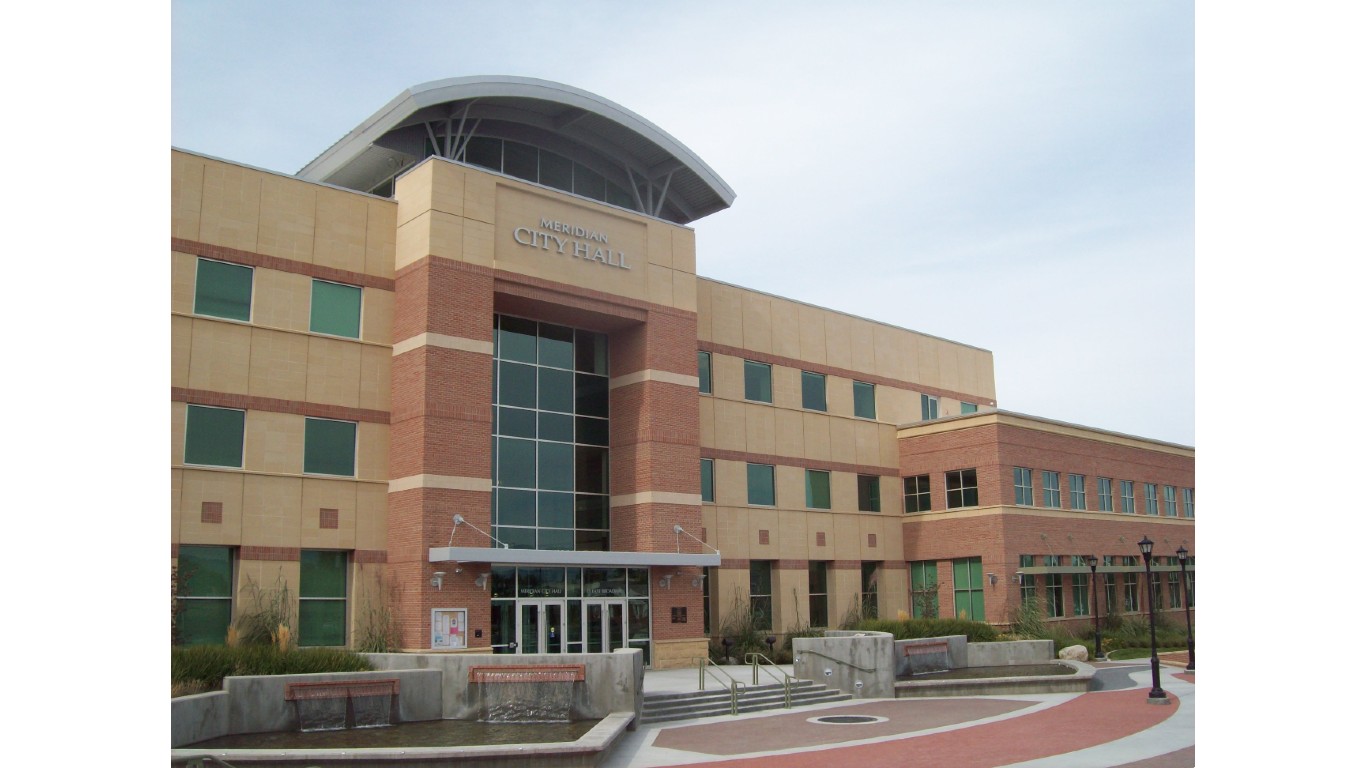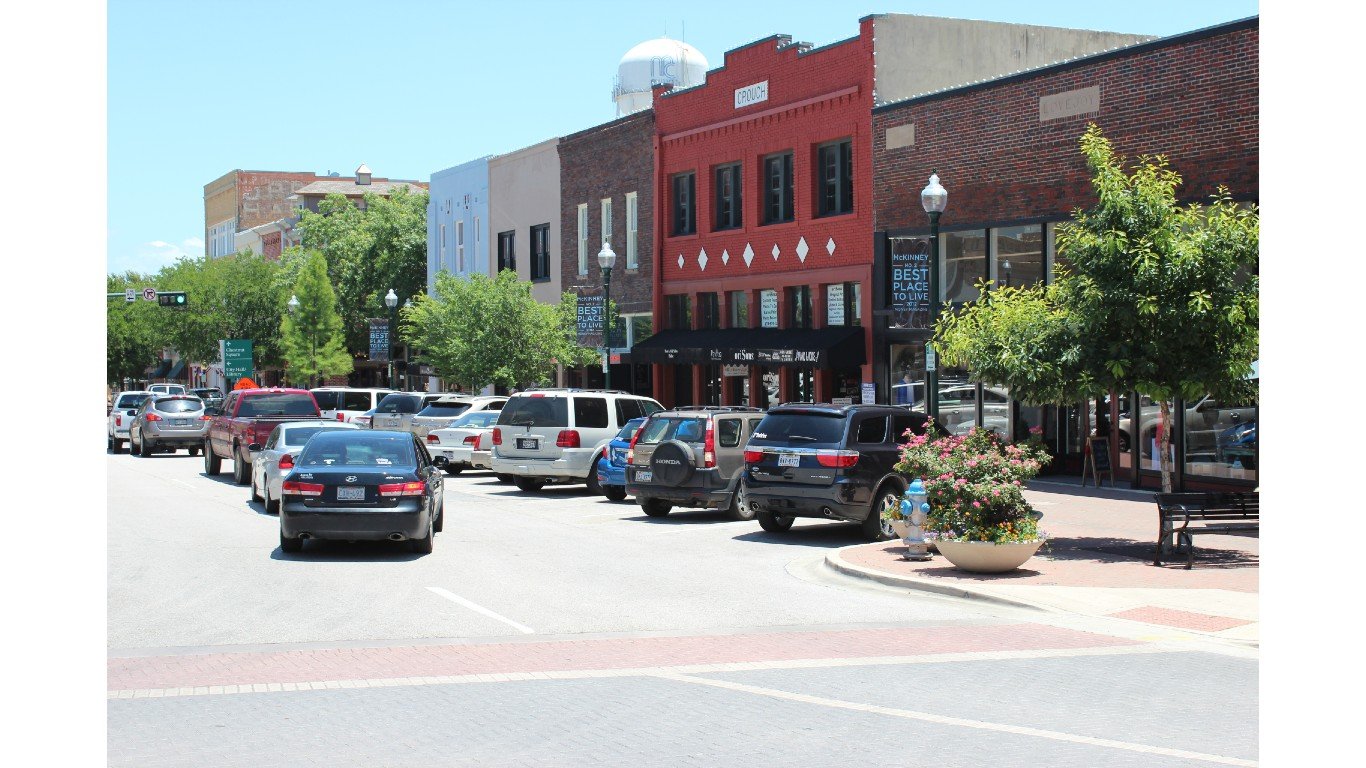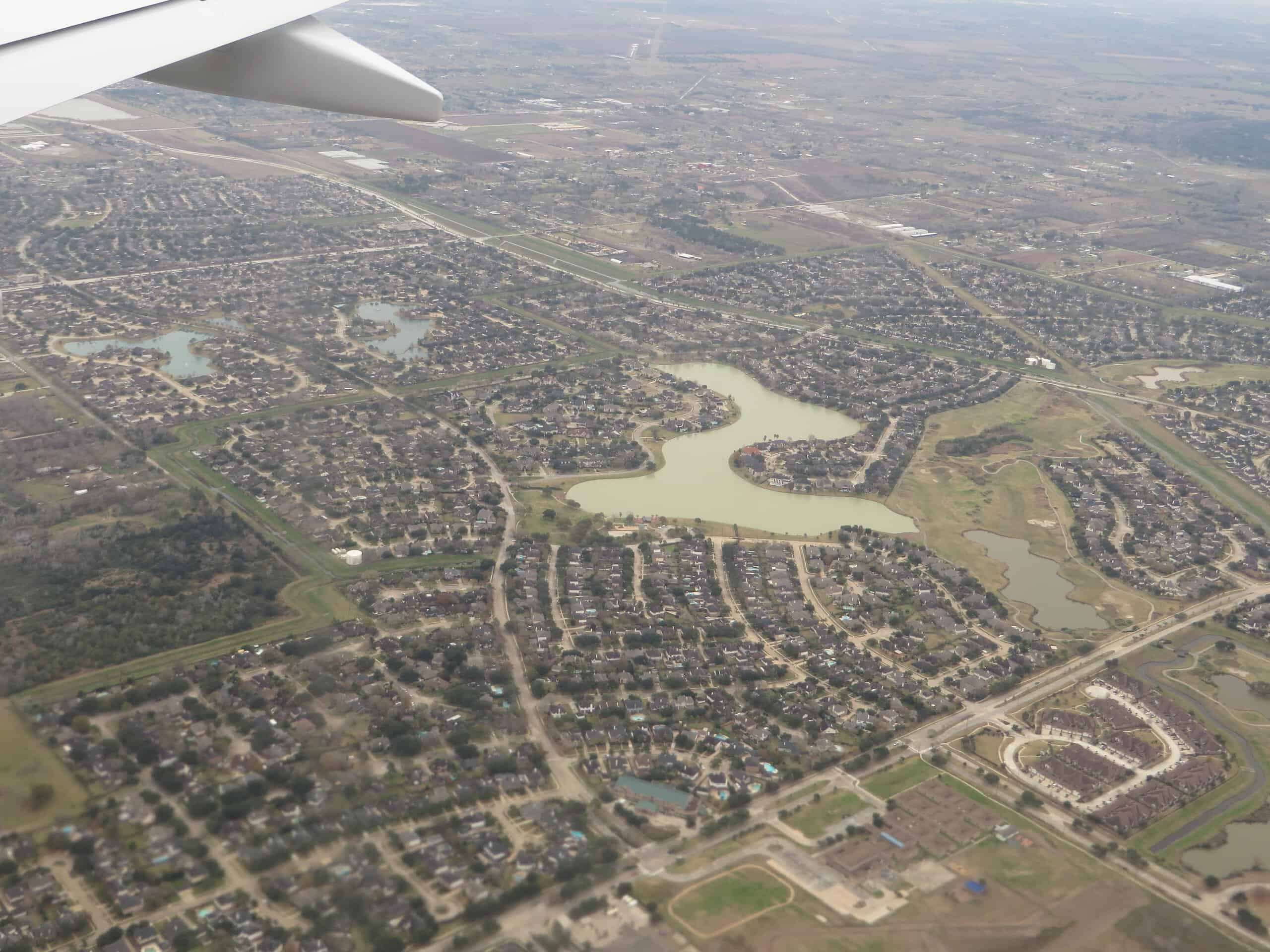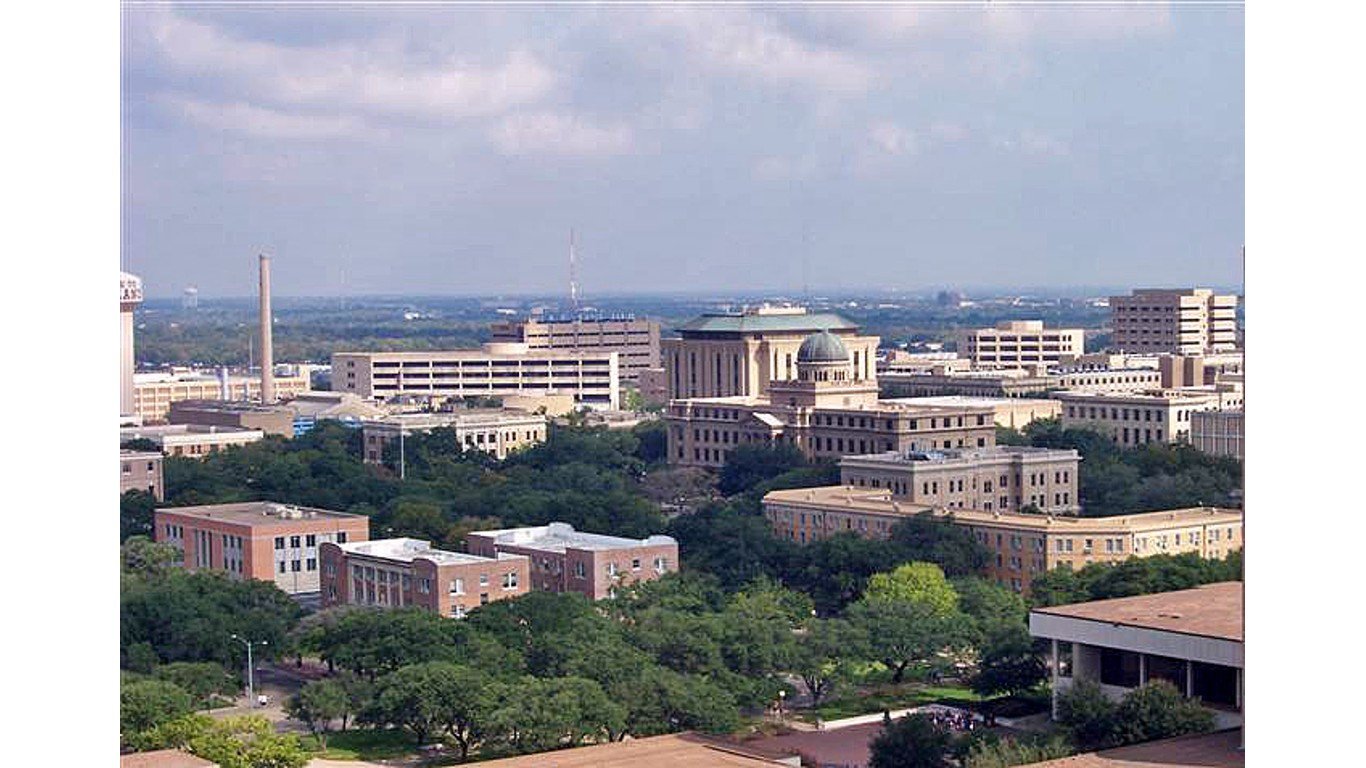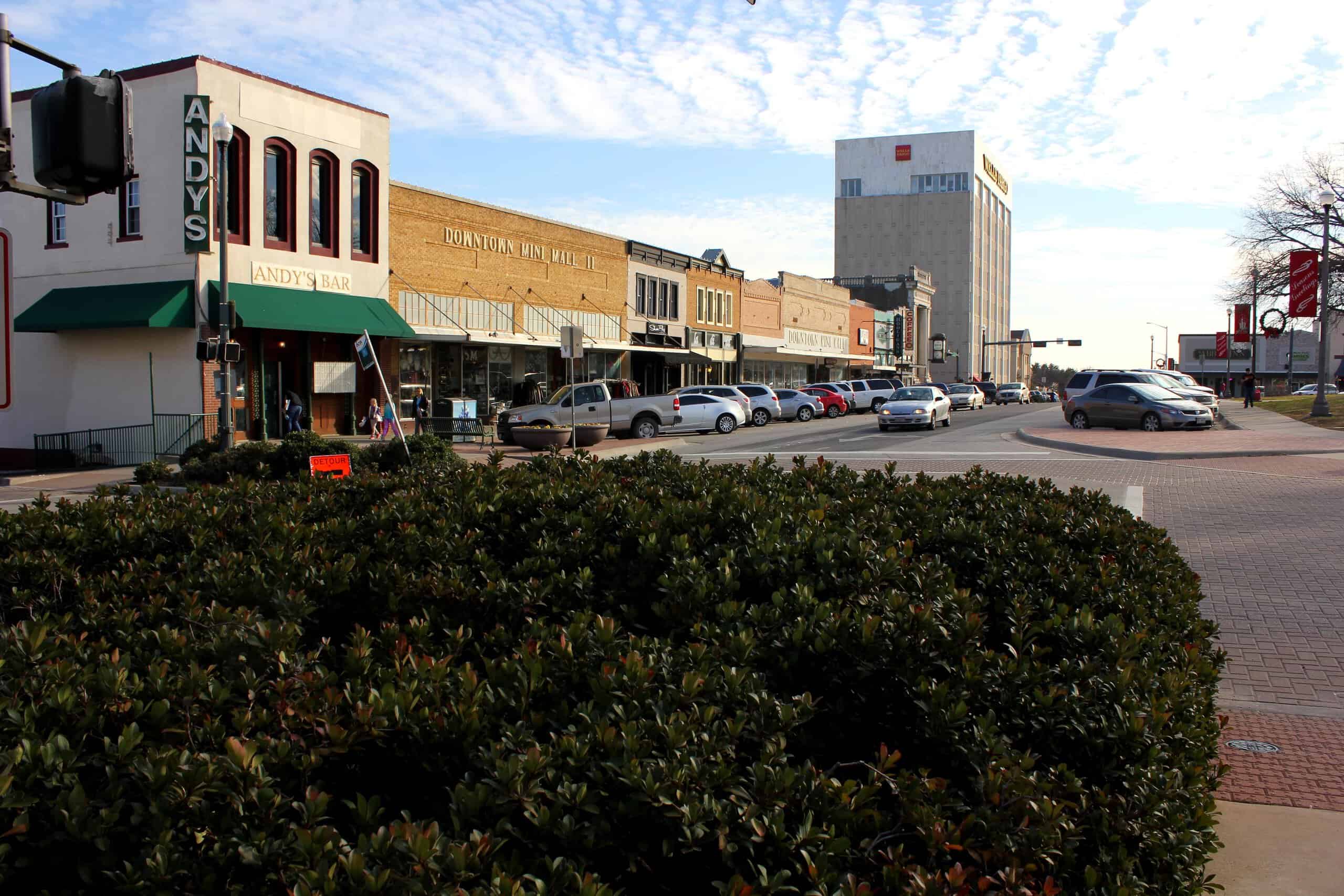

A recent study found that nearly half of the over 31,000 cities in the United States will face some sort of population decline by the end of the century. Of course, the flip side of that is that about half of the cities will face population growth.
While some of the population decline in half the cities may be due to natural causes (less births and more deaths), a part of it will also be due to residents leaving and choosing to live elsewhere — perhaps with better economic conditions and more services — where they can more easily raise families. Inevitably, those leaving will contribute to population growth in the places where they settle down. (Also see: Cities That Will Empty Out By End of Century.)
Indeed, over 1,300 cities and towns of all sizes will in fact double in population by the end of the century, according to the study published in Nature, Depopulation and associated challenges for US cities by 2100. To estimate future trends, the study considered population projections under five scenarios, from environmentally friendly development to fossil-fueled development.
To find America’s large cities that will explode in population by the end of the century, 24/7 Wall St. reviewed the study, listing here the 31 cities with 2020 population above 100,000 that are projected to at least double in population by 2100 — under the middle of the road scenario, which includes intermediate challenges. We also added socioeconomic data — median household income, unemployment rate, bachelor’s degree attainment rate — from the Census Bureau’s 5-year estimates 2022 American Community Survey.
Large cities in only 13 states comprise the list. By far Texas has the most cities on the list, at 14, with Utah and Washington state next at three each. The South region is represented with 17 cities, the West with nine, and the Midwest with five. No large cities in the Northeast are projected to double in population by 2100.
Many of the cities on the list are affluent cities, and almost all have a better jobs market. Of the 31 large cities on the list, 17 have a higher median household income than the national median (eight have median income above $100,000); 27 have a lower unemployment rate than the national rate; and 23 have a higher bachelor’s degree attainment rate than the national figure.
A large number of the cities are already part of greater metropolitan areas, such as The Woodlands, Sugar Land, and Pearland, which are part of the Houston metro area, or Denton, which is at the edge of Dallas, and Round Rock, which is near Austin. Similarly, Surprise is in the outskirts of Phoenix.
The largest city on the list is Houston, followed by Dallas. They are projected to grow in population by 119% and 103%, respectively. Houston will grow from 2.3 million residents in 202 to over 5 million by 2100, and Dallas from 1.3 million to 2.7 million. Such population explosions can present significant challenges to government, infrastructure, and services.
While we list here only cities with over 100,000 in population as of 2020, the study projects even greater population growths among some smaller cities. For example, Williston, North Dakota is projected to grow from 29,160 residents in 2020 to 217,148 residents by 2100 — a 640% swelling. Similarly, Dickinson, North Dakota, and Heber, Utah, are projected to face a population growth of 424% (from 25,679 to 135,483) and 323% (from 16,856 to 70,201), respectively.
Why This Matters

While population trend scenarios for 2100 may sound far off, they do provide possible trajectories to consider both for Americans who want to move and for governments. Cities that have expanding populations have to deal with socioeconomic, environmental, and infrastructure challenges to accommodate the ever growing population. Residents of such cities may encounter increased traffic congestion, disruptions in some services that become overloaded serving so many people, and other challenges. Such cities need to plan ahead and find ways to address population growth challenges.
31. League City, Texas
- Population change by 2100: +101.3% (from 114,392 in 2020 to est. 231,765 in 2100)
- Population change by 2050: +46.9% (est. growth to 168,028)
- Current population trend from 2000-2020: moderately increasing
- Median household income: $117,316 (vs. $75,149 nationwide)
- Unemployment rate: 4.2% (vs. 5.3% nationwide)
- Bachelor’s degree attainment rate: 48.1% (vs. 34.3% nationwide)
30. Surprise, Arizona
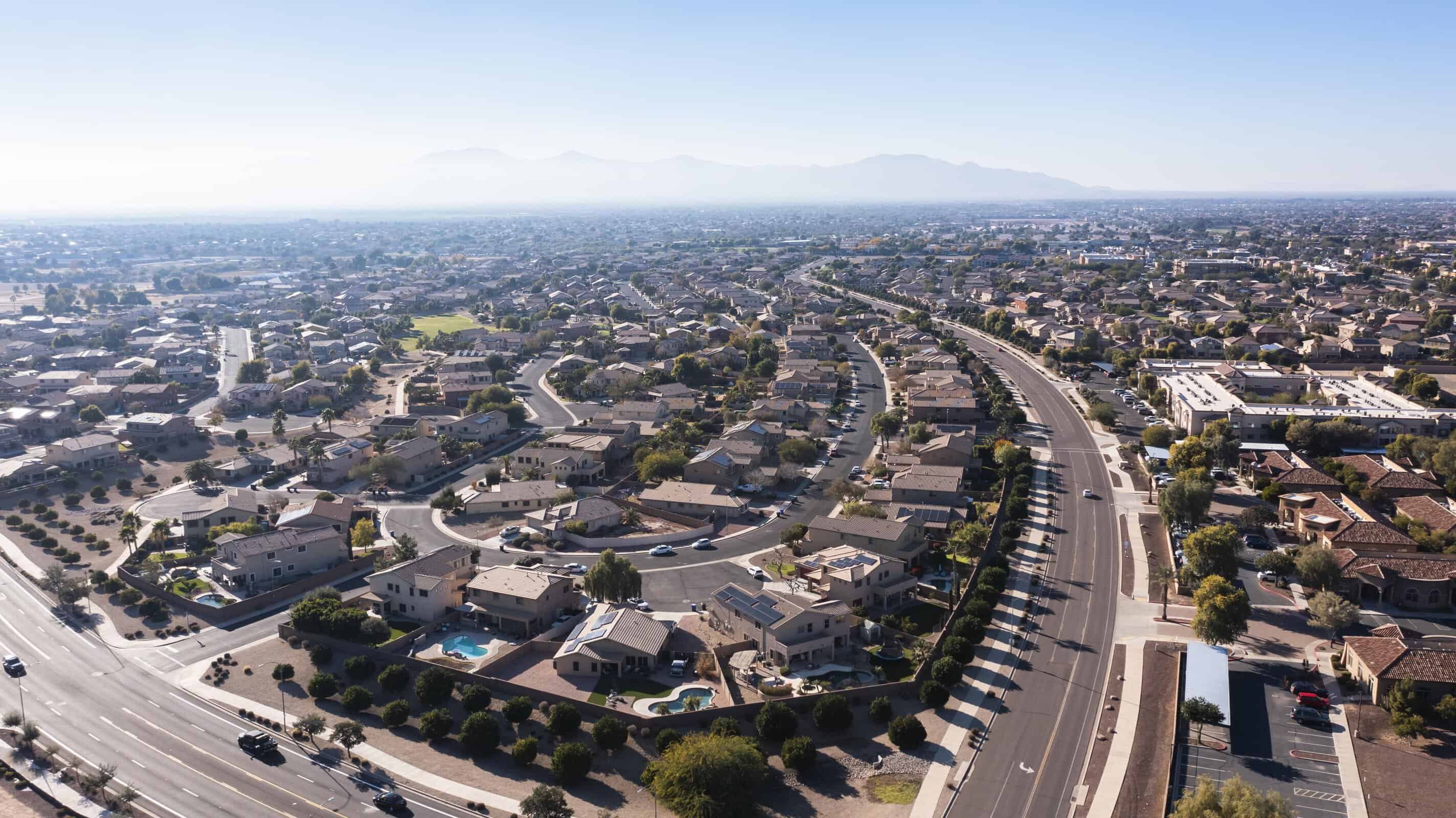
- Population change by 2100: +101.5% (from 143,148 in 2020 to est. 290,351 in 2100)
- Population change by 2050: +50.9% (est. growth to 215,953)
- Current population trend from 2000-2020: moderately increasing
- Median household income: $87,756 (vs. $75,149 nationwide)
- Unemployment rate: 4.5% (vs. 5.3% nationwide)
- Bachelor’s degree attainment rate: 31.0% (vs. 34.3% nationwide)
29. Dallas, Texas

- Population change by 2100: +102.1% (from 1,304,379 in 2020 to est. 2,652,726 in 2100)
- Population change by 2050: +48.8% (est. growth to 1,940,687)
- Current population trend from 2000-2020: slowly increasing
- Median household income: $63,985 (vs. $75,149 nationwide)
- Unemployment rate: 5.0% (vs. 5.3% nationwide)
- Bachelor’s degree attainment rate: 36.5% (vs. 34.3% nationwide)
28. Madison, Wisconsin
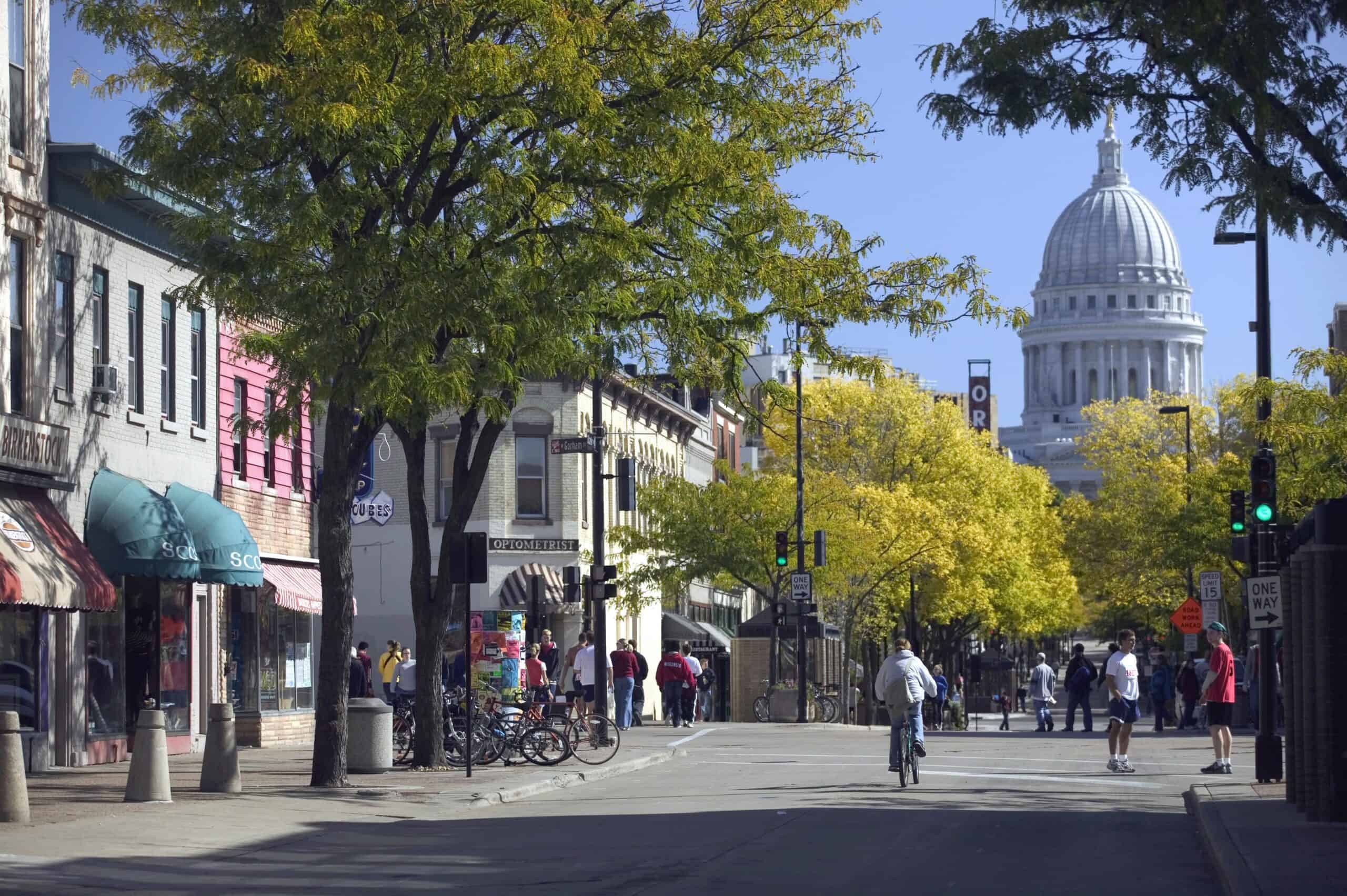
- Population change by 2100: +103.9% (from 269,840 in 2020 to est. 553,663 in 2100)
- Population change by 2050: +45.8% (est. growth to 393,434)
- Current population trend from 2000-2020: moderately increasing
- Median household income: $74,895 (vs. $75,149 nationwide)
- Unemployment rate: 2.6% (vs. 5.3% nationwide)
- Bachelor’s degree attainment rate: 58.9% (vs. 34.3% nationwide)
27. Clarksville, Tennessee
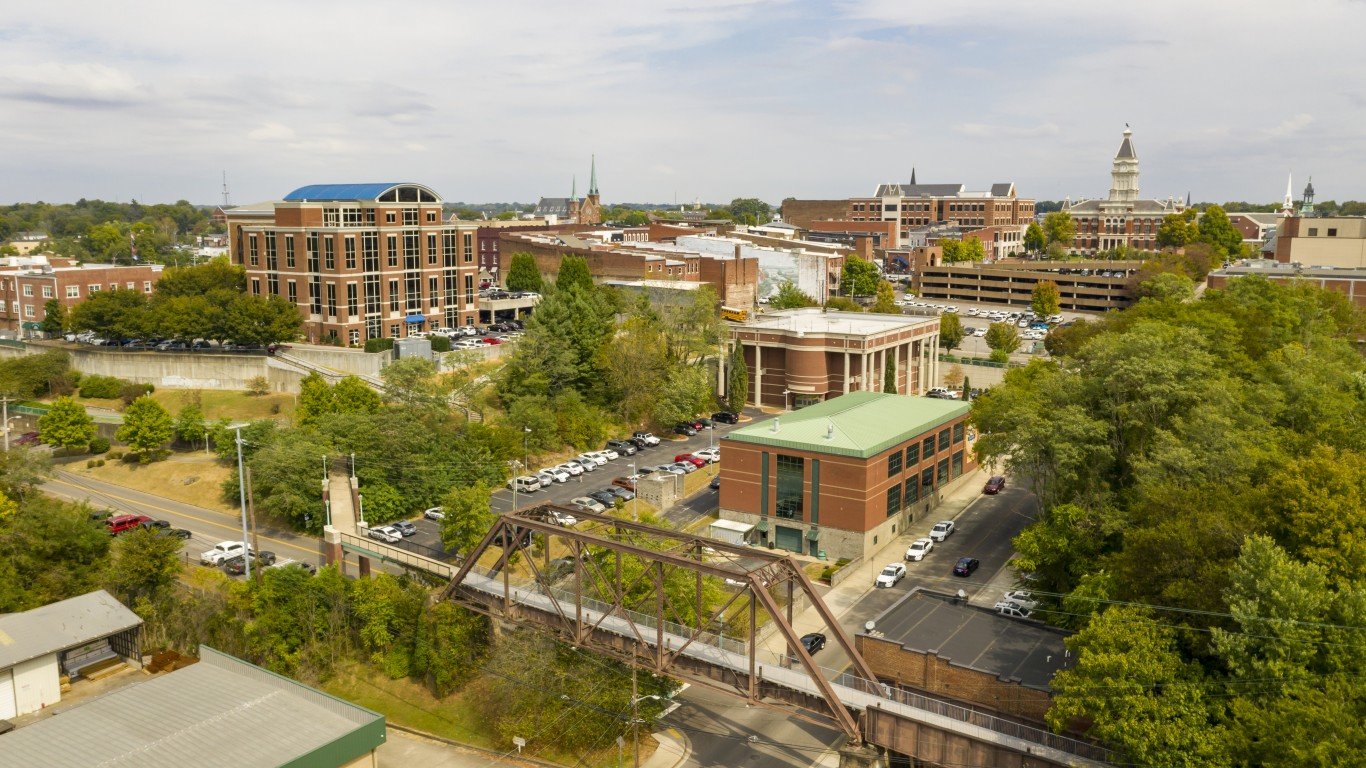
- Population change by 2100: +104.6% (from 166,722 in 2020 to est. 343,344 in 2100)
- Population change by 2050: +45.1% (est. growth to 241,840)
- Current population trend from 2000-2020: moderately increasing
- Median household income: $62,688 (vs. $75,149 nationwide)
- Unemployment rate: 5.7% (vs. 5.3% nationwide)
- Bachelor’s degree attainment rate: 28.9% (vs. 34.3% nationwide)
26. West Valley City, Utah
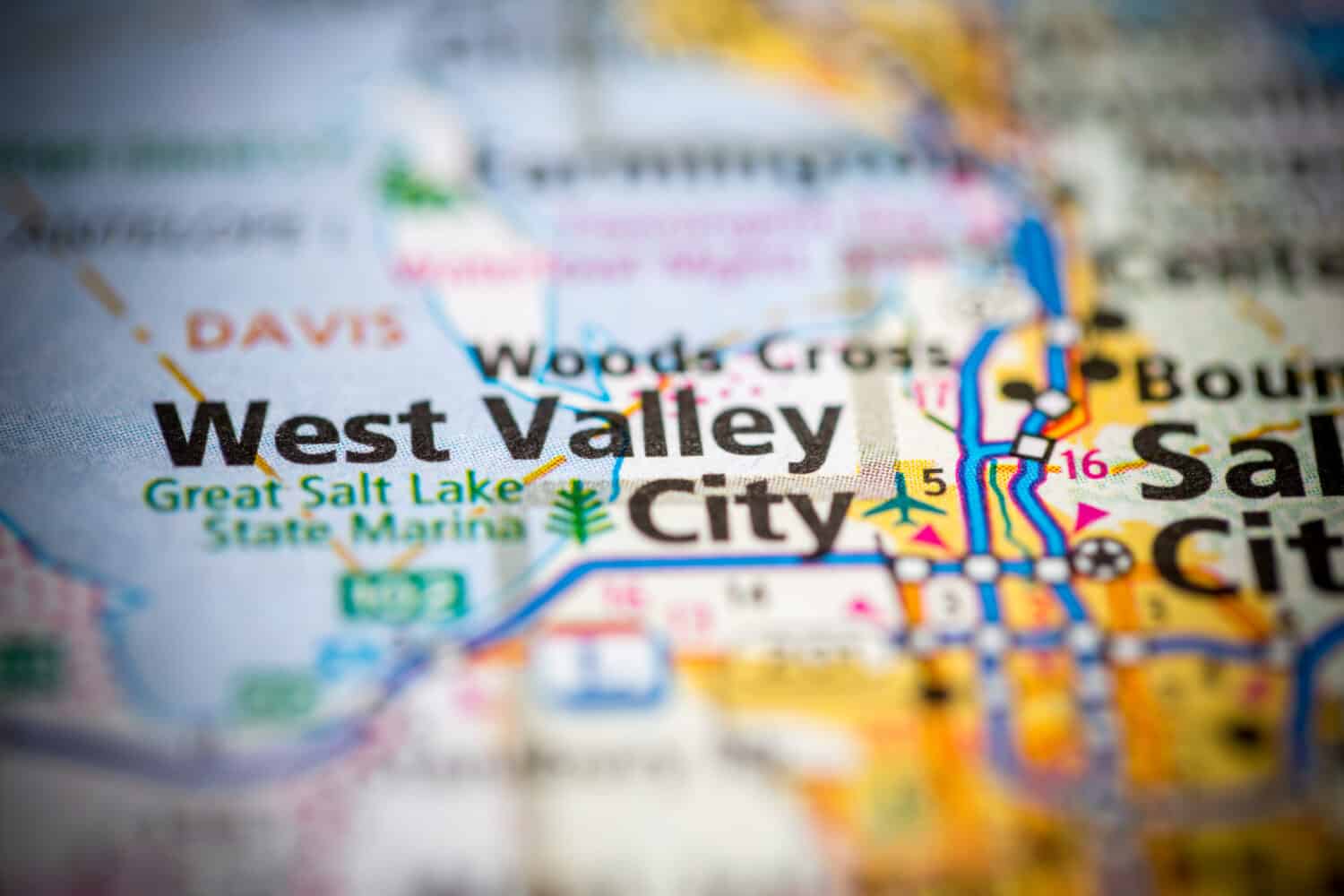
- Population change by 2100: +105.0% (from 140,230 in 2020 to est. 289,885 in 2100)
- Population change by 2050: +46.8% (est. growth to 205,853)
- Current population trend from 2000-2020: slowly increasing
- Median household income: $81,719 (vs. $75,149 nationwide)
- Unemployment rate: 3.9% (vs. 5.3% nationwide)
- Bachelor’s degree attainment rate: 15.8% (vs. 34.3% nationwide)
25. Provo, Utah

- Population change by 2100: +108.1% (from 115,162 in 2020 to est. 241,467 in 2100)
- Population change by 2050: +47.6% (est. growth to 170,006)
- Current population trend from 2000-2020: slowly increasing
- Median household income: $57,943 (vs. $75,149 nationwide)
- Unemployment rate: 4.4% (vs. 5.3% nationwide)
- Bachelor’s degree attainment rate: 44.4% (vs. 34.3% nationwide)
24. West Jordan, Utah
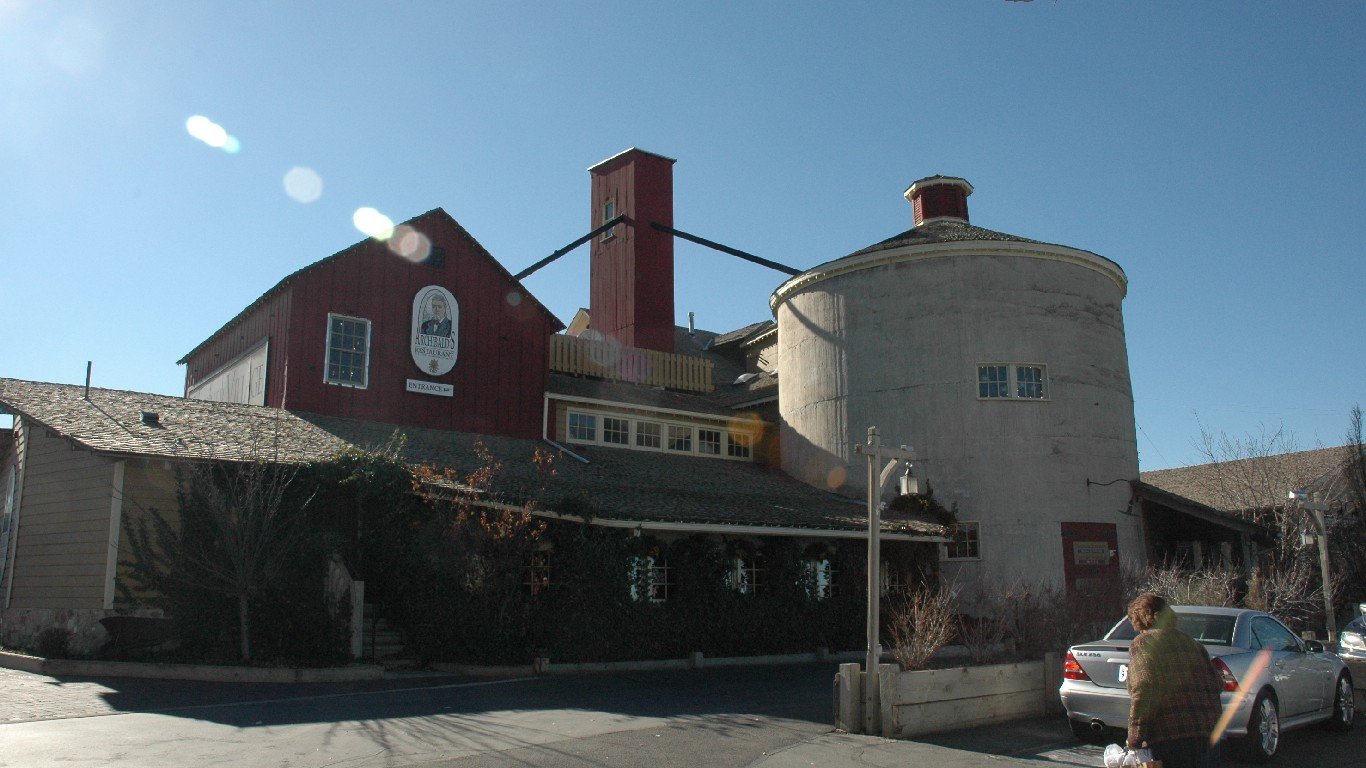
- Population change by 2100: +108.3% (from 116,961 in 2020 to est. 245,612 in 2100)
- Population change by 2050: +48.0% (est. growth to 173,117)
- Current population trend from 2000-2020: moderately increasing
- Median household income: $99,002 (vs. $75,149 nationwide)
- Unemployment rate: 4.2% (vs. 5.3% nationwide)
- Bachelor’s degree attainment rate: 27.8% (vs. 34.3% nationwide)
23. Columbia, Missouri
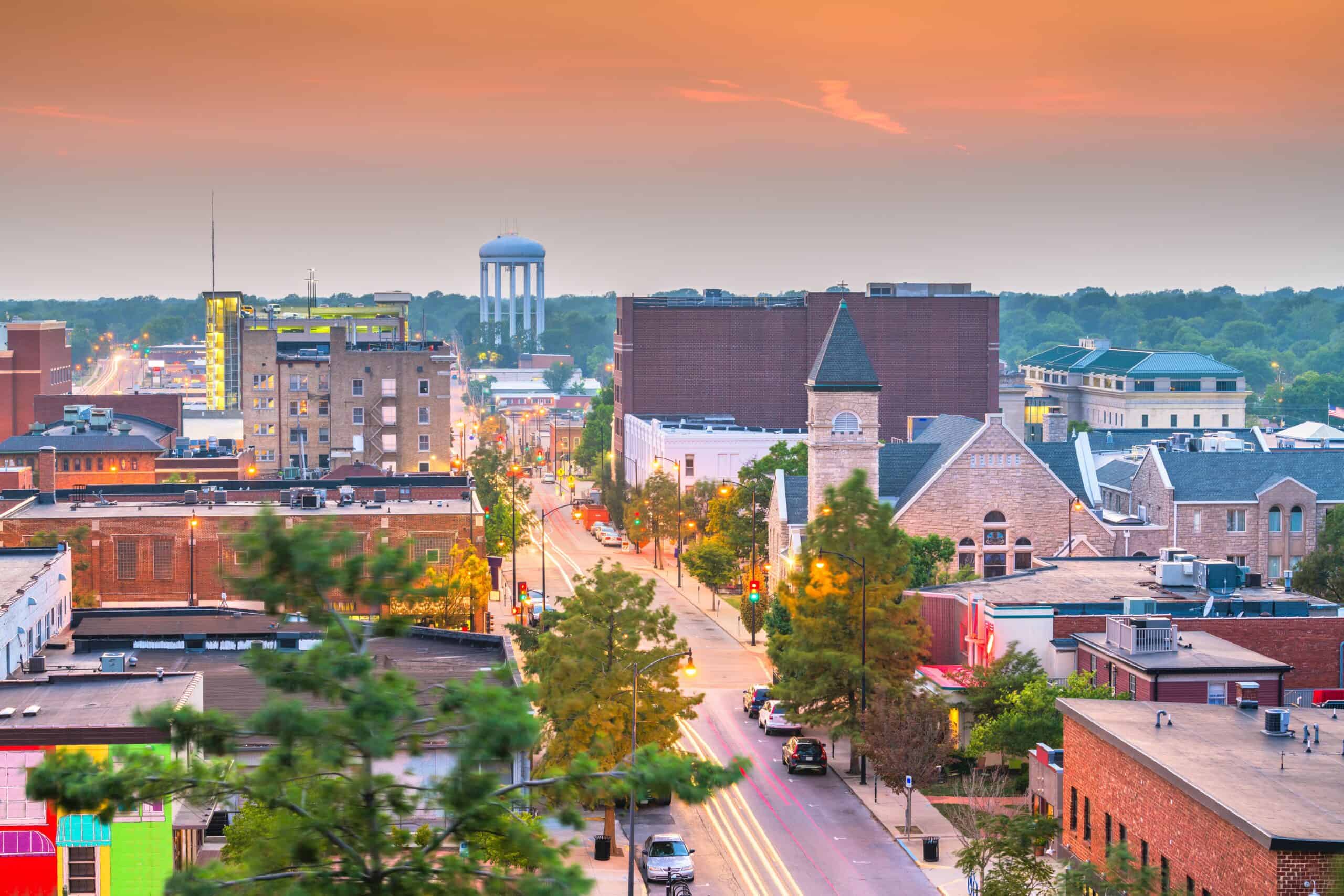
- Population change by 2100: +108.5% (from 126,254 in 2020 to est. 265,038 in 2100)
- Population change by 2050: +46.1% (est. growth to 184,434)
- Current population trend from 2000-2020: moderately increasing
- Median household income: $60,455 (vs. $75,149 nationwide)
- Unemployment rate: 4.0% (vs. 5.3% nationwide)
- Bachelor’s degree attainment rate: 55.3% (vs. 34.3% nationwide)
22. Meridian, Idaho
- Population change by 2100: +109.1% (from 117,635 in 2020 to est. 247,728 in 2100)
- Population change by 2050: +49.8% (est. growth to 176,272)
- Current population trend from 2000-2020: highly increasing
- Median household income: $93,296 (vs. $75,149 nationwide)
- Unemployment rate: 2.7% (vs. 5.3% nationwide)
- Bachelor’s degree attainment rate: 43.5% (vs. 34.3% nationwide)
21. Lubbock, Texas
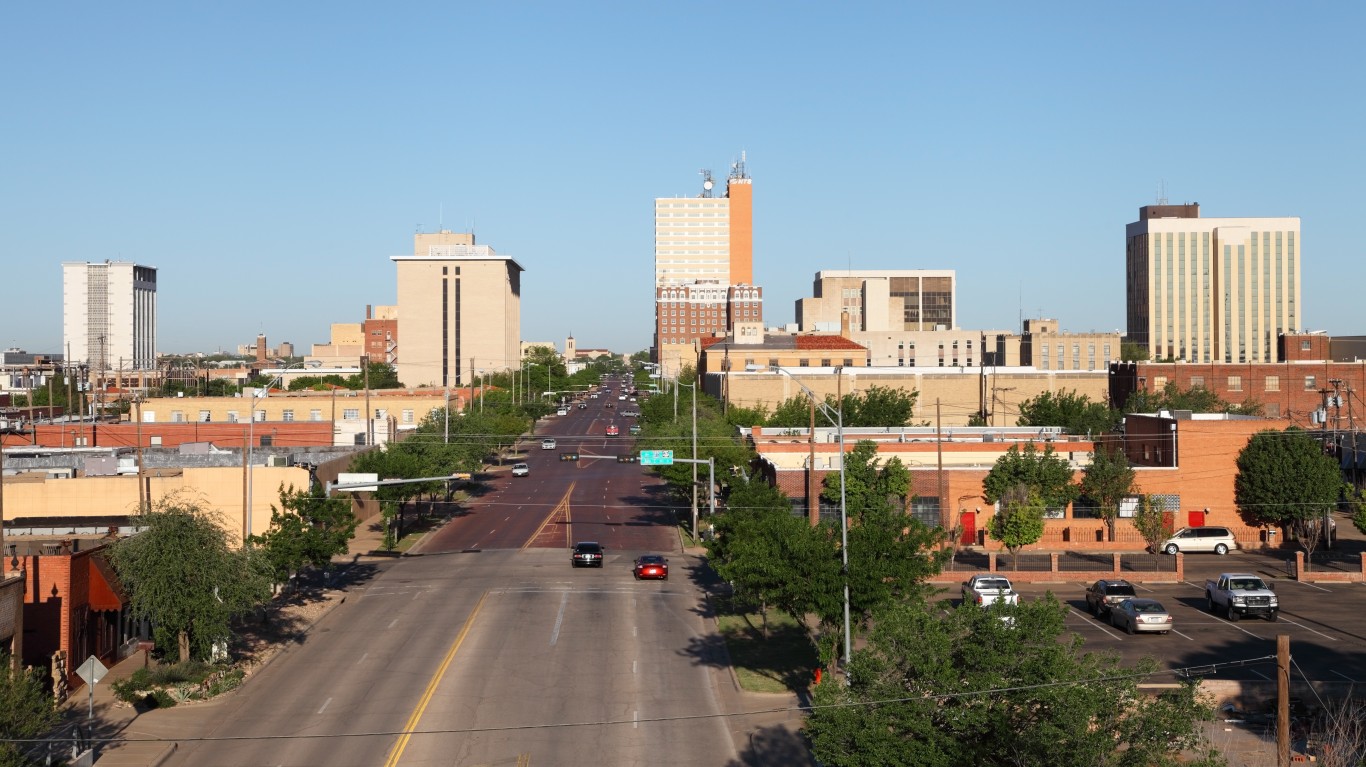
- Population change by 2100: +111.3% (from 257,141 in 2020 to est. 547,086 in 2100)
- Population change by 2050: +44.4% (est. growth to 371,283)
- Current population trend from 2000-2020: moderately increasing
- Median household income: $58,734 (vs. $75,149 nationwide)
- Unemployment rate: 4.6% (vs. 5.3% nationwide)
- Bachelor’s degree attainment rate: 34.2% (vs. 34.3% nationwide)
20. Kent, Washington
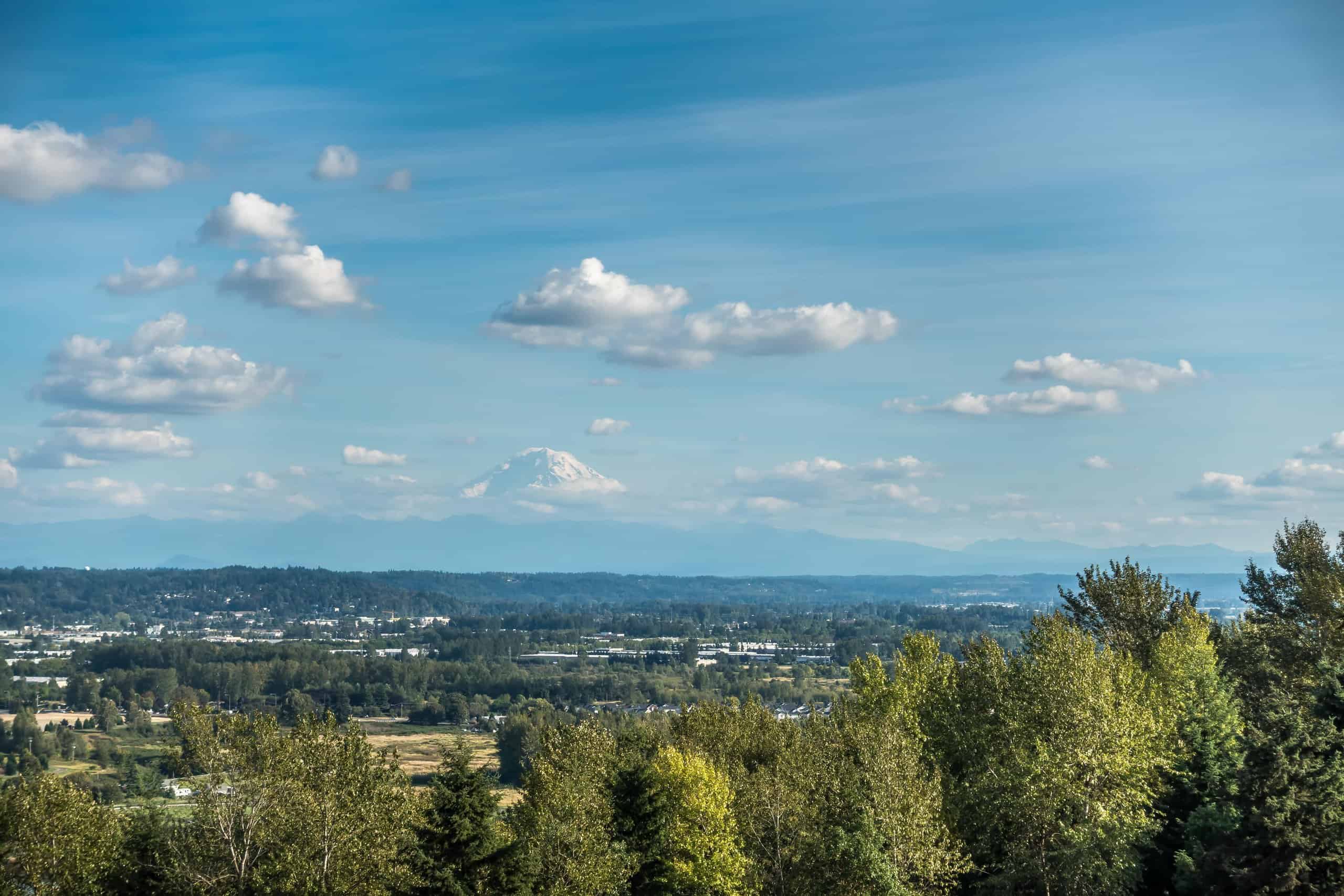
- Population change by 2100: +112.7% (from 136,588 in 2020 to est. 292,341 in 2100)
- Population change by 2050: +51.6% (est. growth to 207,043)
- Current population trend from 2000-2020: moderately increasing
- Median household income: $86,966 (vs. $75,149 nationwide)
- Unemployment rate: 7.6% (vs. 5.3% nationwide)
- Bachelor’s degree attainment rate: 27.9% (vs. 34.3% nationwide)
19. McKinney, Texas
- Population change by 2100: +113.9% (from 195,308 in 2020 to est. 420,404 in 2100)
- Population change by 2050: +54.8% (est. growth to 302,319)
- Current population trend from 2000-2020: moderately increasing
- Median household income: $113,286 (vs. $75,149 nationwide)
- Unemployment rate: 3.7% (vs. 5.3% nationwide)
- Bachelor’s degree attainment rate: 52.2% (vs. 34.3% nationwide)
18. Allen, Texas
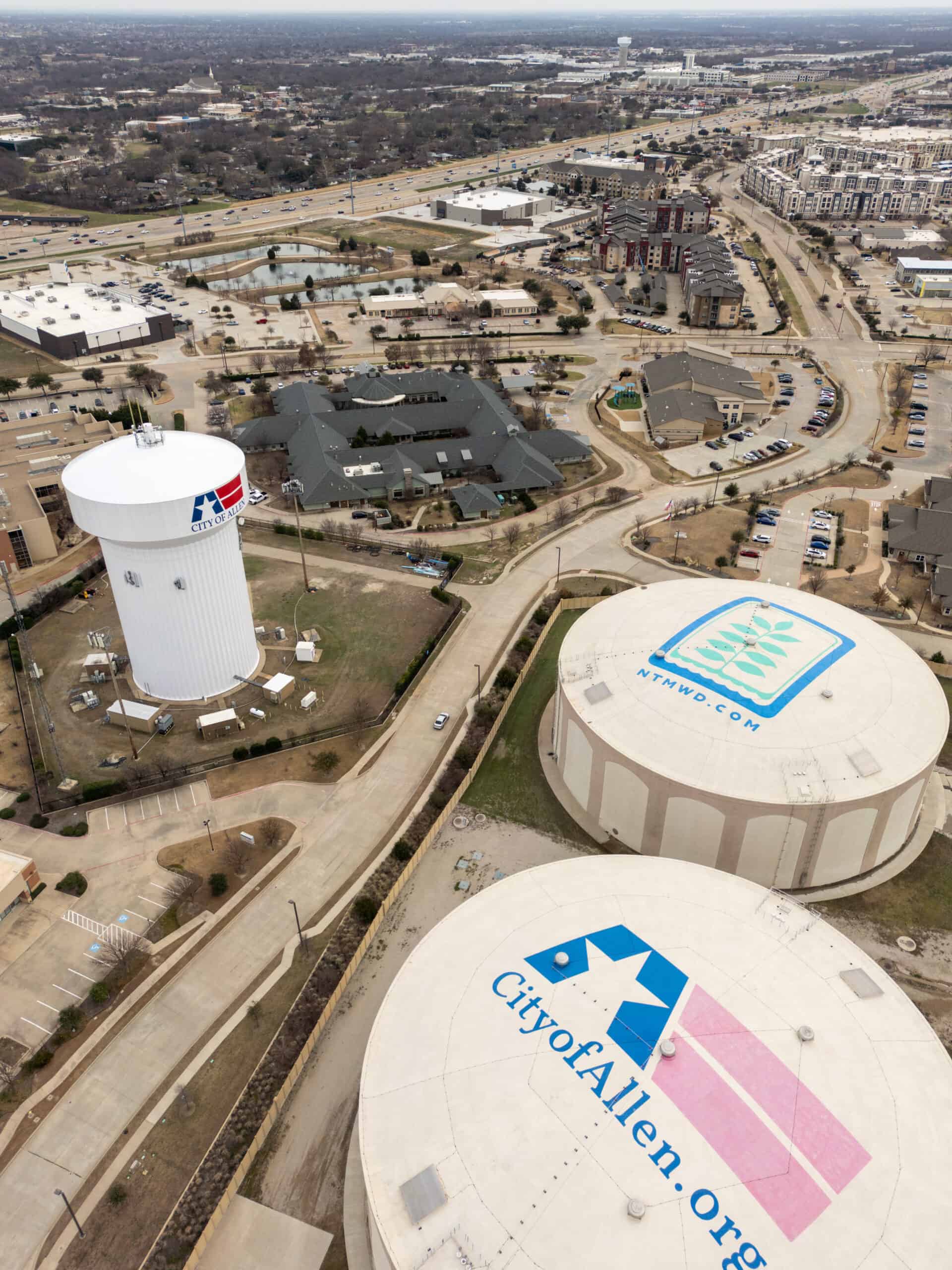
- Population change by 2100: +114.1% (from 104,627 in 2020 to est. 225,367 in 2100)
- Population change by 2050: +54.9% (est. growth to 162,018)
- Current population trend from 2000-2020: moderately increasing
- Median household income: $121,259 (vs. $75,149 nationwide)
- Unemployment rate: 4.3% (vs. 5.3% nationwide)
- Bachelor’s degree attainment rate: 55.2% (vs. 34.3% nationwide)
17. Bellevue, Washington
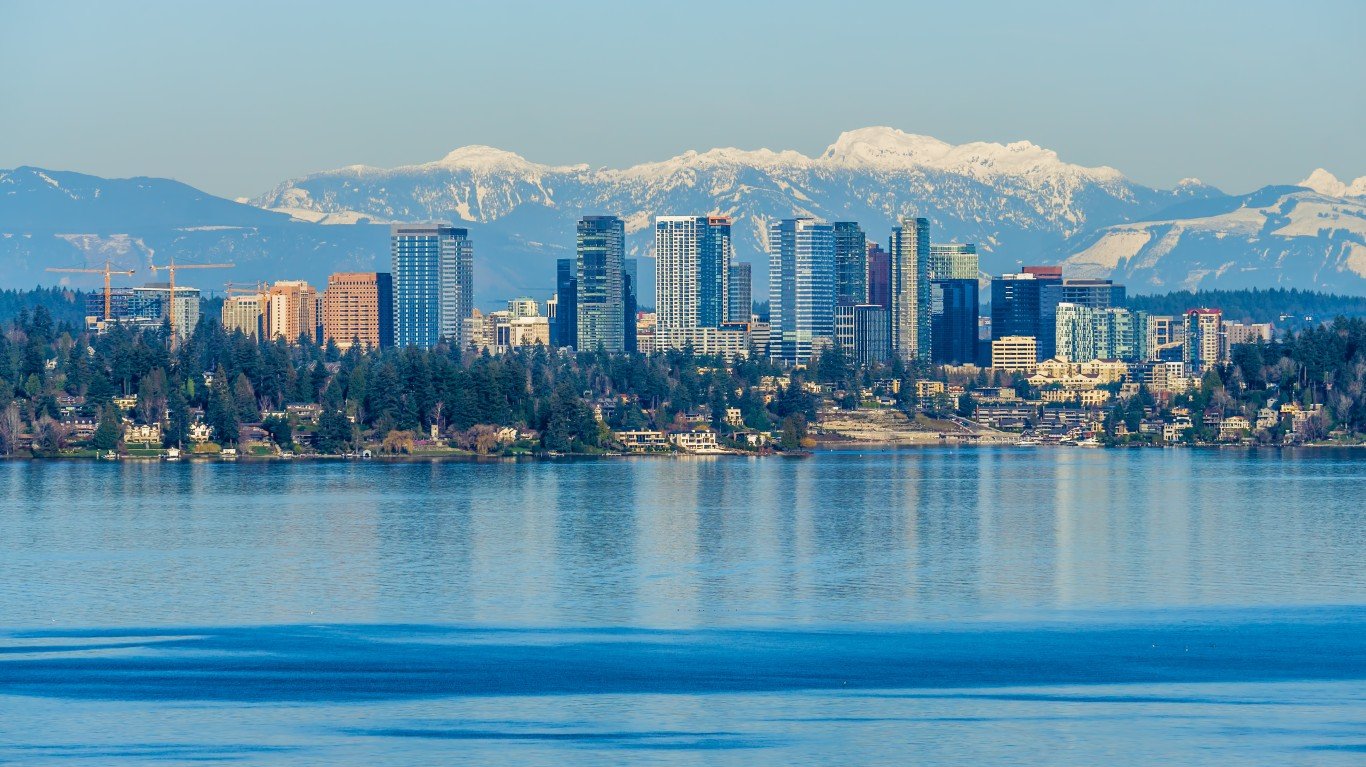
- Population change by 2100: +114.1% (from 151,854 in 2020 to est. 327,134 in 2100)
- Population change by 2050: +52.1% (est. growth to 230,899)
- Current population trend from 2000-2020: moderately increasing
- Median household income: $149,551 (vs. $75,149 nationwide)
- Unemployment rate: 4.0% (vs. 5.3% nationwide)
- Bachelor’s degree attainment rate: 70.0% (vs. 34.3% nationwide)
16. Cape Coral, Florida
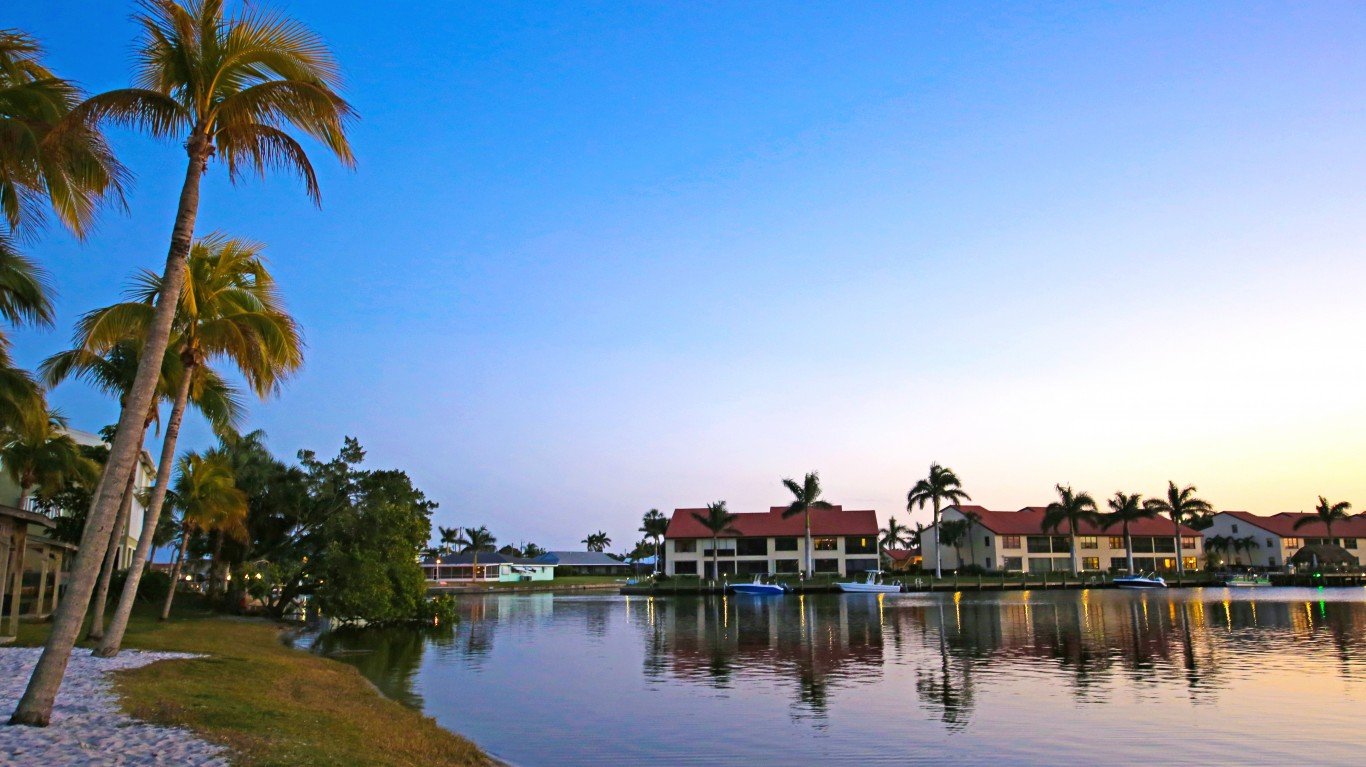
- Population change by 2100: +116.0% (from 194,016 in 2020 to est. 421,060 in 2100)
- Population change by 2050: +58.8% (est. growth to 308,127)
- Current population trend from 2000-2020: moderately increasing
- Median household income: $72,474 (vs. $75,149 nationwide)
- Unemployment rate: 4.4% (vs. 5.3% nationwide)
- Bachelor’s degree attainment rate: 24.6% (vs. 34.3% nationwide)
15. The Woodlands, Texas
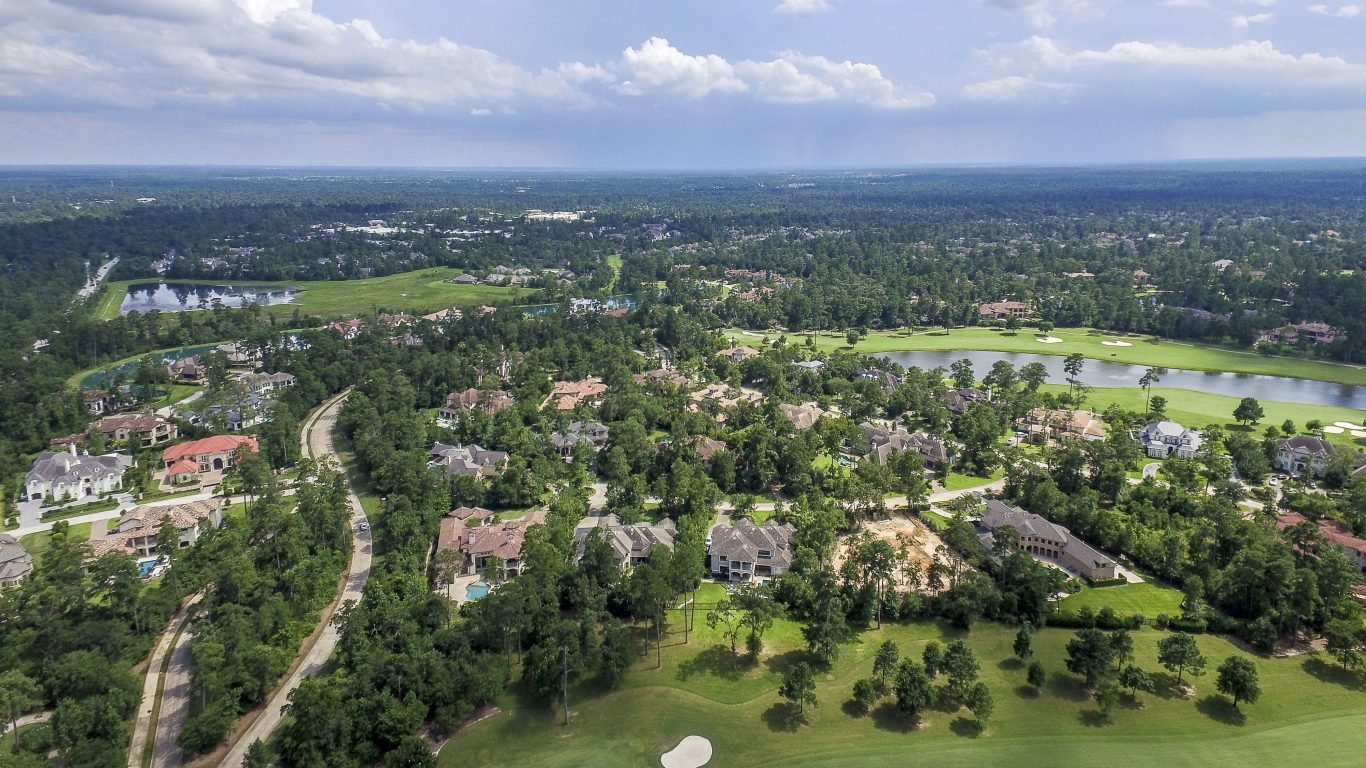
- Population change by 2100: +116.6% (from 114,436 in 2020 to est. 249,600 in 2100)
- Population change by 2050: +53.0% (est. growth to 175,138)
- Current population trend from 2000-2020: moderately increasing
- Median household income: $142,384 (vs. $75,149 nationwide)
- Unemployment rate: 5.3% (vs. 5.3% nationwide)
- Bachelor’s degree attainment rate: 66.3% (vs. 34.3% nationwide)
14. Pearland, Texas
- Population change by 2100: +117.4% (from 125,828 in 2020 to est. 275,307 in 2100)
- Population change by 2050: +53.8% (est. growth to 193,481)
- Current population trend from 2000-2020: moderately increasing
- Median household income: $111,123 (vs. $75,149 nationwide)
- Unemployment rate: 3.2% (vs. 5.3% nationwide)
- Bachelor’s degree attainment rate: 47.1% (vs. 34.3% nationwide)
13. Midland, Texas
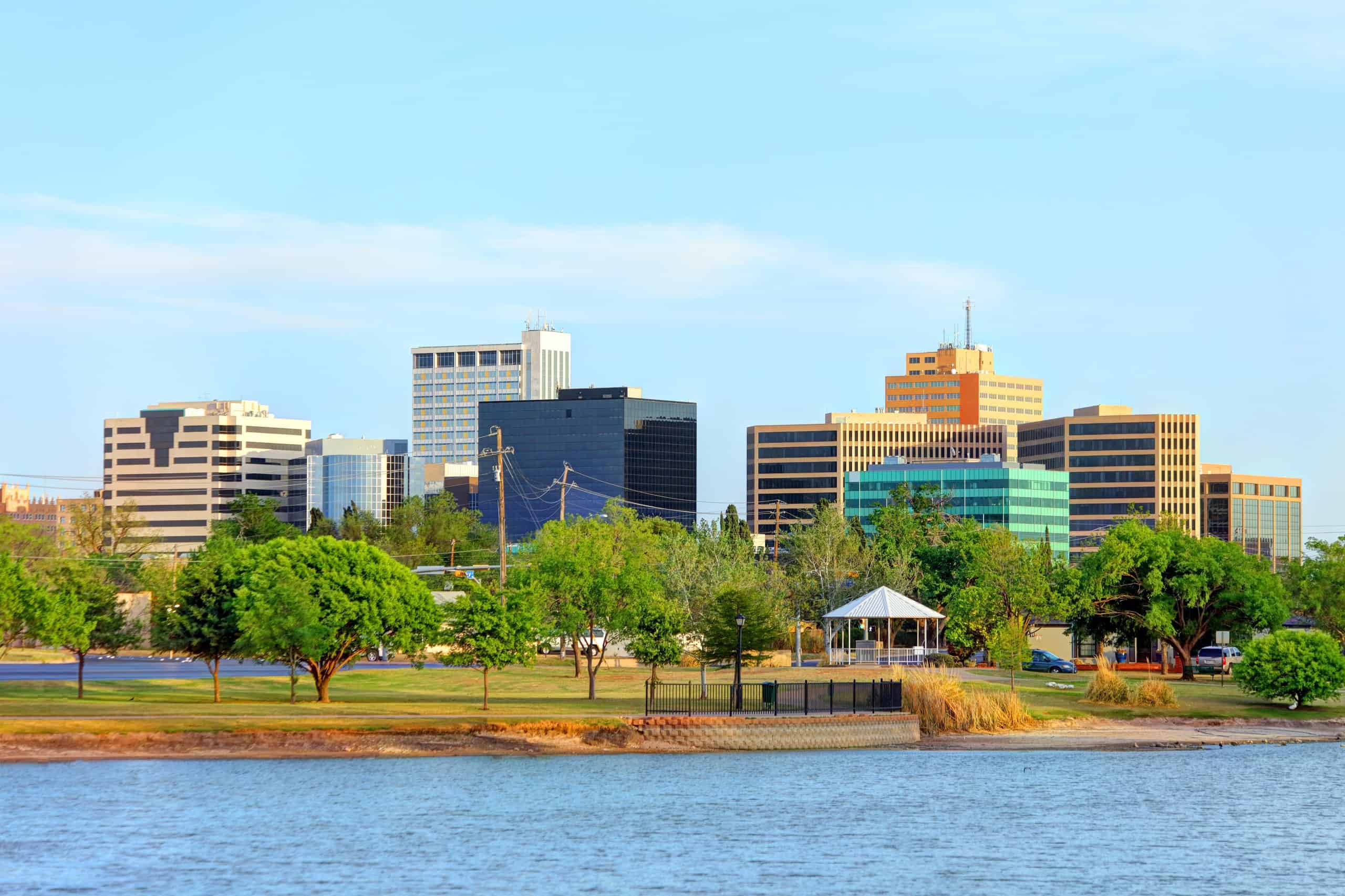
- Population change by 2100: +118.7% (from 132,524 in 2020 to est. 291,698 in 2100)
- Population change by 2050: +50.4% (est. growth to 199,300)
- Current population trend from 2000-2020: moderately increasing
- Median household income: $90,448 (vs. $75,149 nationwide)
- Unemployment rate: 3.2% (vs. 5.3% nationwide)
- Bachelor’s degree attainment rate: 31.8% (vs. 34.3% nationwide)
12. Houston, Texas
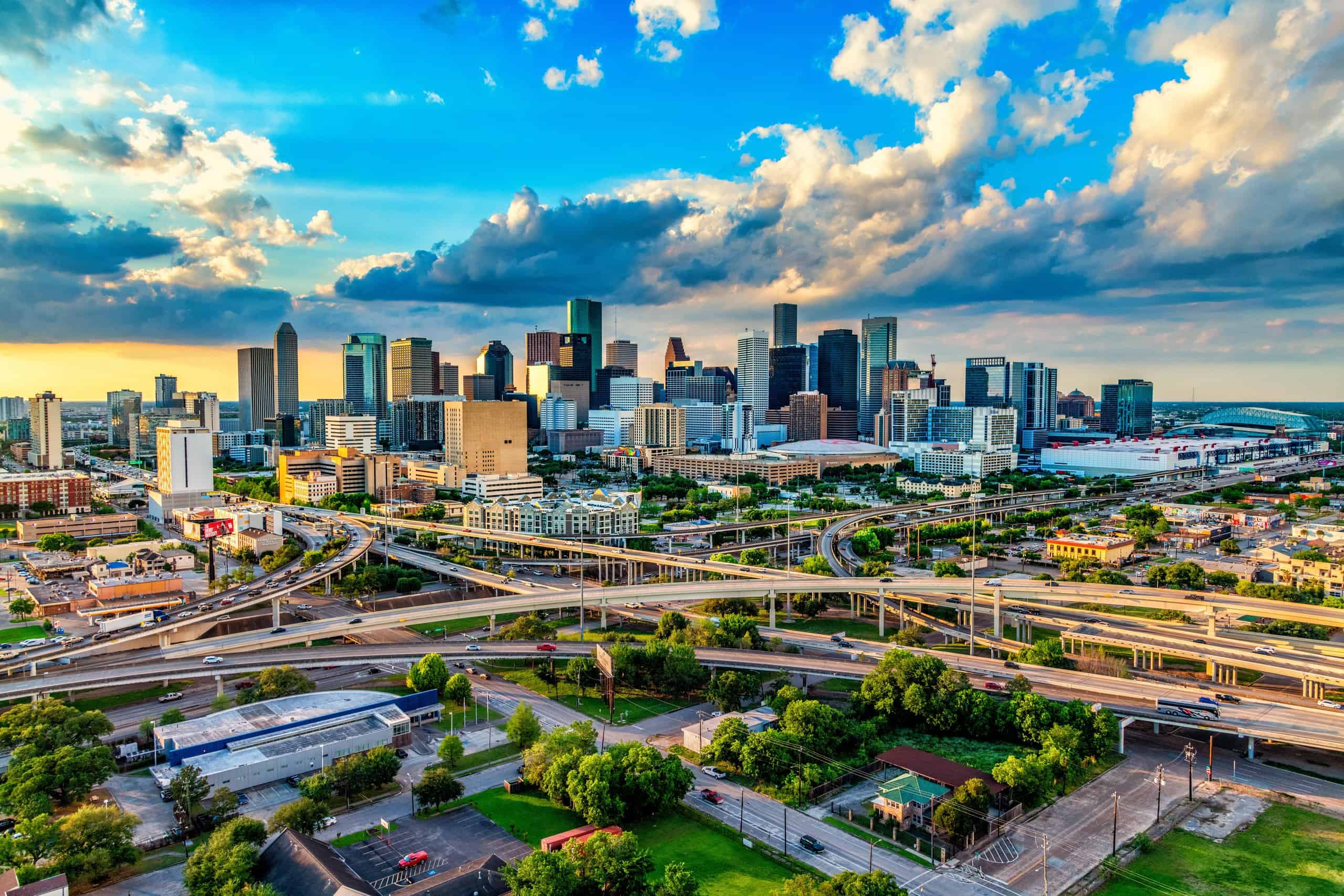
- Population change by 2100: +119.1% (from 2,304,580 in 2020 to est. 5,082,809 in 2100)
- Population change by 2050: +53.0% (est. growth to 3,525,746)
- Current population trend from 2000-2020: slowly increasing
- Median household income: $60,440 (vs. $75,149 nationwide)
- Unemployment rate: 6.5% (vs. 5.3% nationwide)
- Bachelor’s degree attainment rate: 35.2% (vs. 34.3% nationwide)
11. Sioux Falls, South Dakota

- Population change by 2100: +119.2% (from 192,517 in 2020 to est. 424,732 in 2100)
- Population change by 2050: +43.7% (est. growth to 276,676)
- Current population trend from 2000-2020: moderately increasing
- Median household income: $71,785 (vs. $75,149 nationwide)
- Unemployment rate: 2.3% (vs. 5.3% nationwide)
- Bachelor’s degree attainment rate: 37.0% (vs. 34.3% nationwide)
10. Renton, Washington
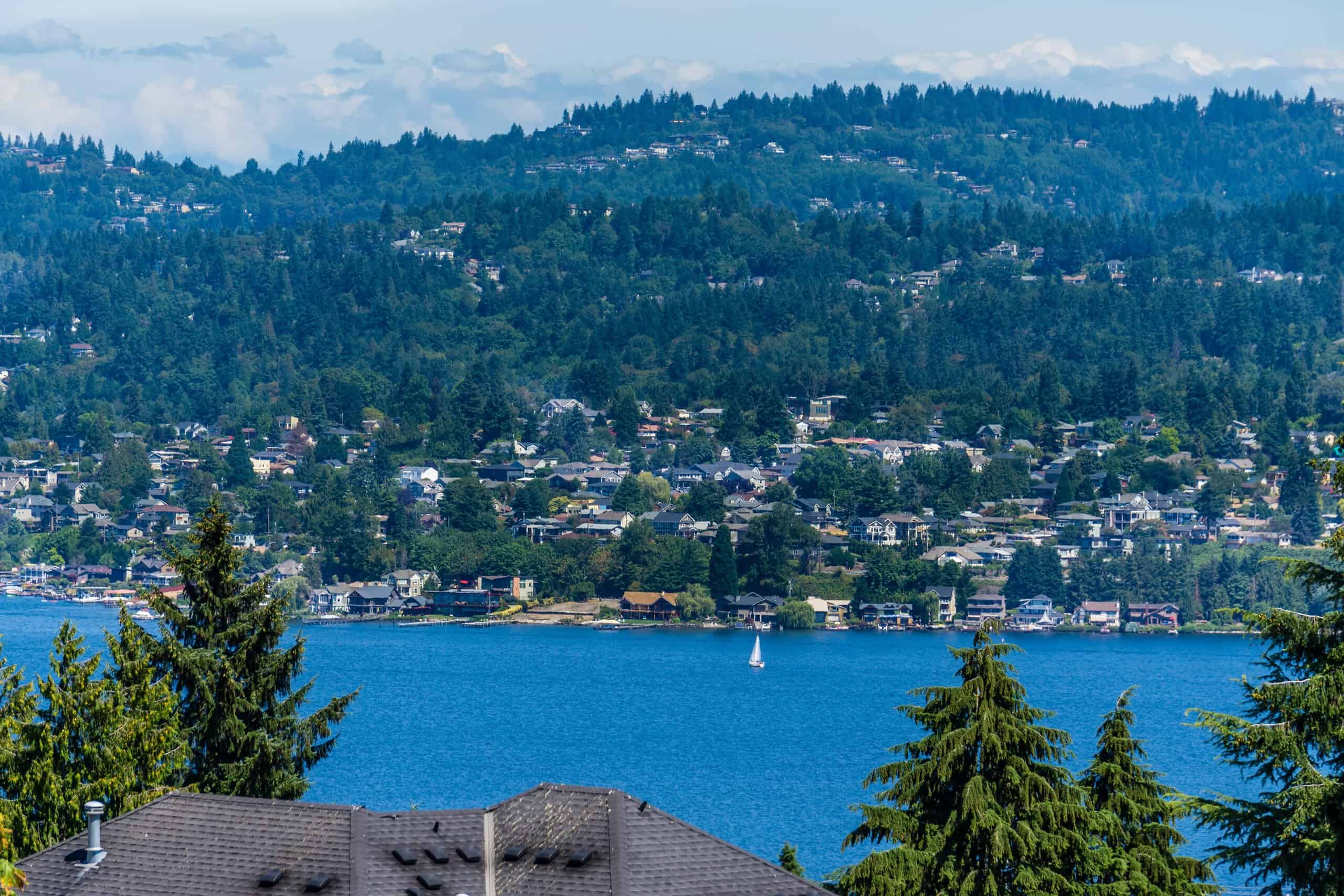
- Population change by 2100: +119.5% (from 106,785 in 2020 to est. 235,827 in 2100)
- Population change by 2050: +54.3% (est. growth to 164,794)
- Current population trend from 2000-2020: moderately increasing
- Median household income: $92,292 (vs. $75,149 nationwide)
- Unemployment rate: 4.2% (vs. 5.3% nationwide)
- Bachelor’s degree attainment rate: 36.9% (vs. 34.3% nationwide)
9. Lincoln, Nebraska
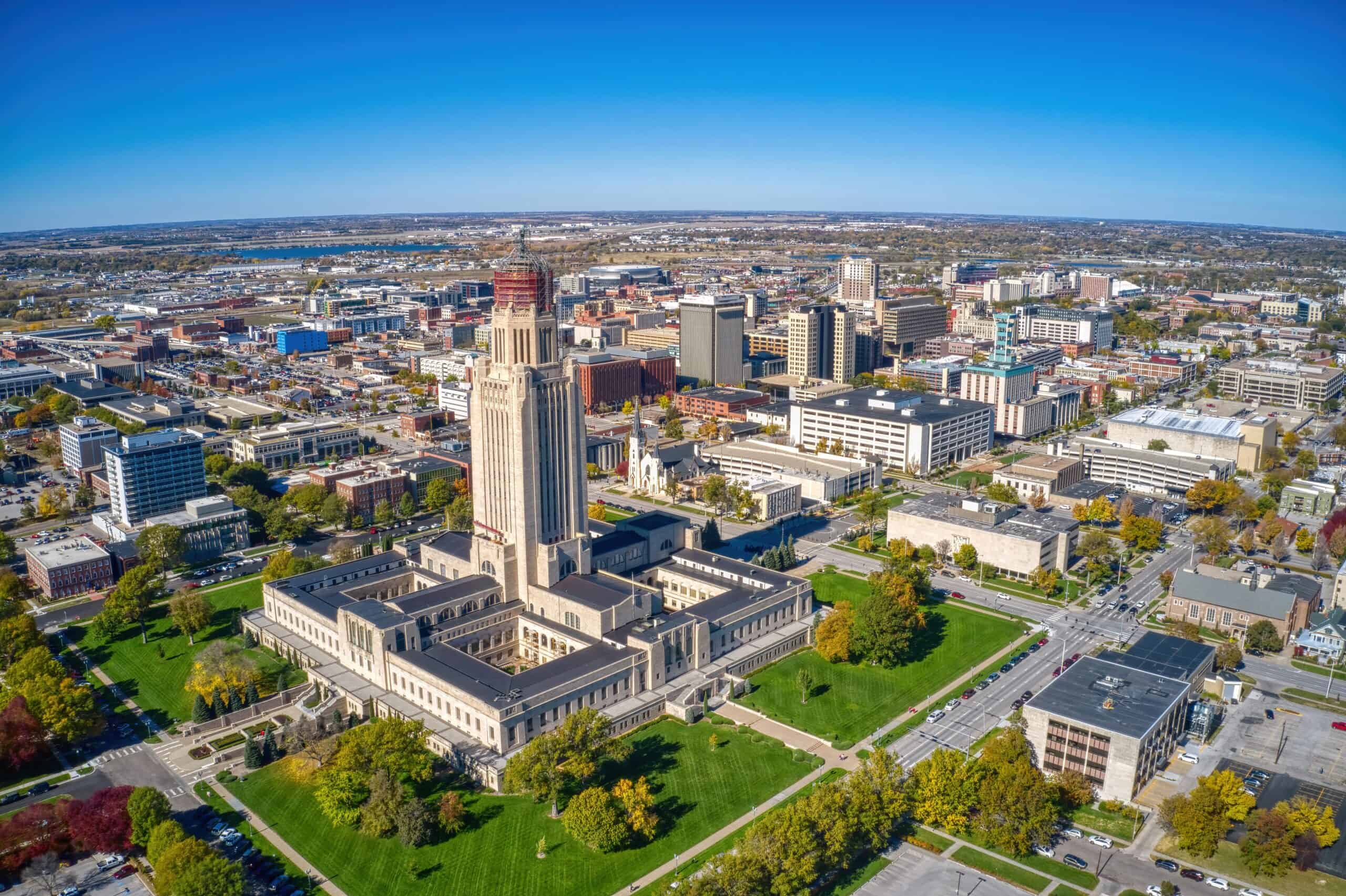
- Population change by 2100: +119.9% (from 291,082 in 2020 to est. 644,626 in 2100)
- Population change by 2050: +44.9% (est. growth to 421,857)
- Current population trend from 2000-2020: moderately increasing
- Median household income: $67,846 (vs. $75,149 nationwide)
- Unemployment rate: 3.3% (vs. 5.3% nationwide)
- Bachelor’s degree attainment rate: 40.9% (vs. 34.3% nationwide)
8. Murfreesboro, Tennessee
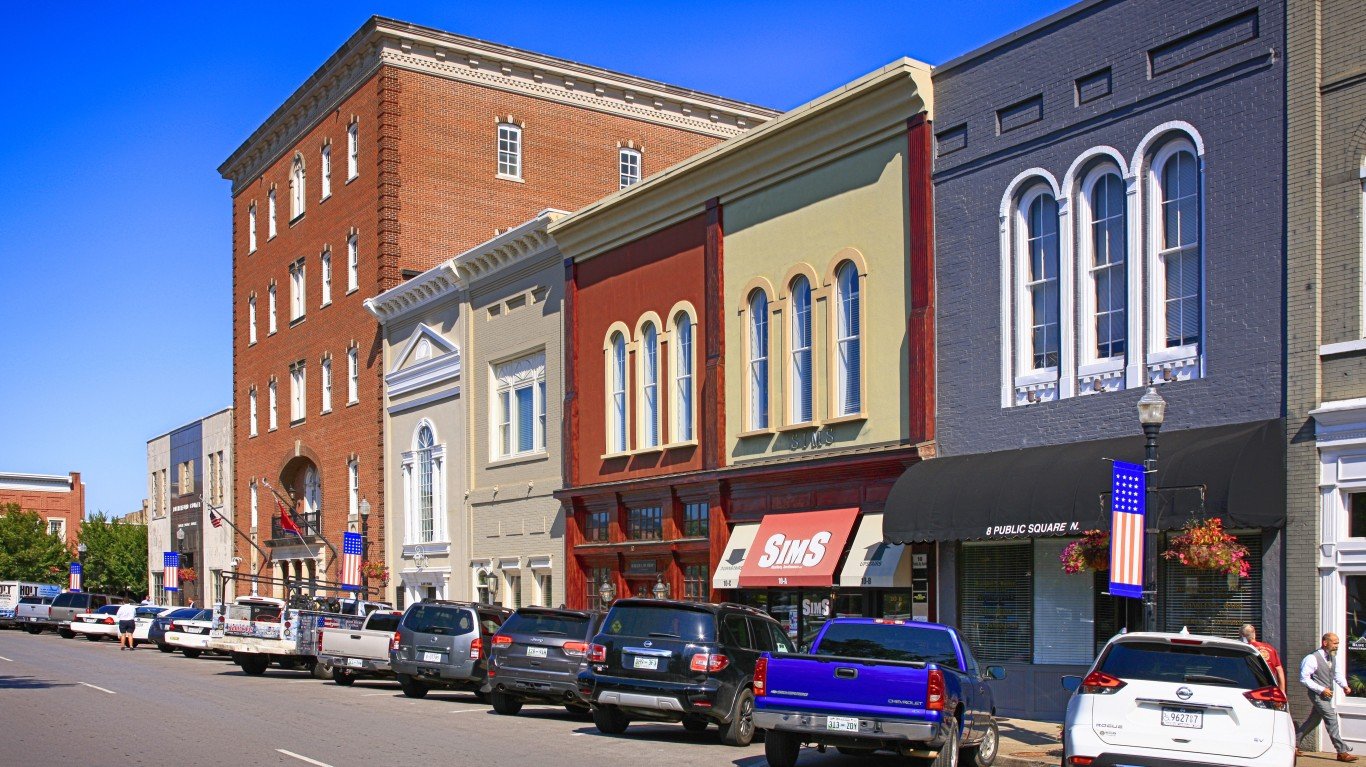
- Population change by 2100: +124.9% (from 152,769 in 2020 to est. 345,753 in 2100)
- Population change by 2050: +53.7% (est. growth to 234,739)
- Current population trend from 2000-2020: moderately increasing
- Median household income: $70,451 (vs. $75,149 nationwide)
- Unemployment rate: 4.3% (vs. 5.3% nationwide)
- Bachelor’s degree attainment rate: 40.5% (vs. 34.3% nationwide)
7. Round Rock, Texas

- Population change by 2100: +137.0% (from 119,468 in 2020 to est. 284,951 in 2100)
- Population change by 2050: +63.3% (est. growth to 195,112)
- Current population trend from 2000-2020: moderately increasing
- Median household income: $91,888 (vs. $75,149 nationwide)
- Unemployment rate: 3.8% (vs. 5.3% nationwide)
- Bachelor’s degree attainment rate: 42.3% (vs. 34.3% nationwide)
6. Fort Collins, Colorado
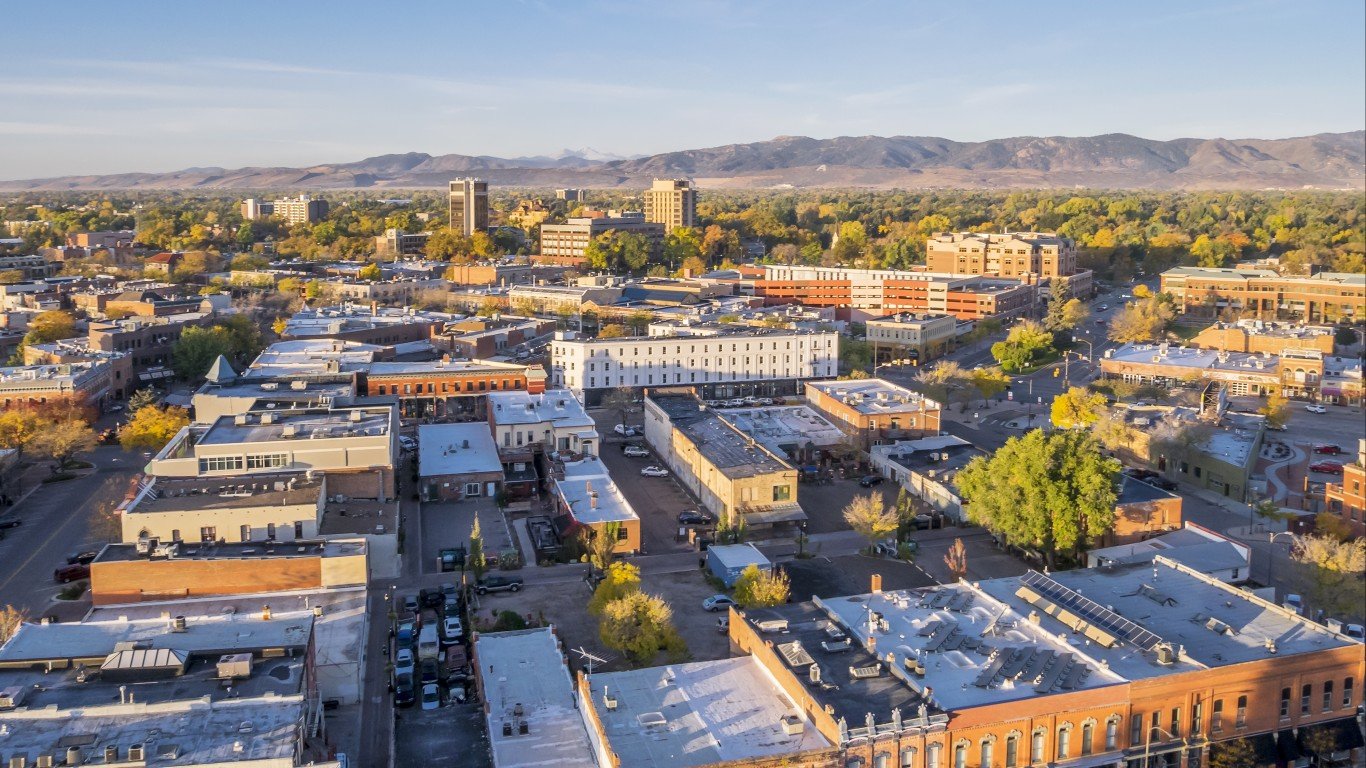
- Population change by 2100: +139.6% (from 169,810 in 2020 to est. 409,270 in 2100)
- Population change by 2050: +62.5% (est. growth to 275,932)
- Current population trend from 2000-2020: moderately increasing
- Median household income: $78,977 (vs. $75,149 nationwide)
- Unemployment rate: 5.3% (vs. 5.3% nationwide)
- Bachelor’s degree attainment rate: 58.3% (vs. 34.3% nationwide)
5. Frisco, Texas

- Population change by 2100: +167.5% (from 200,509 in 2020 to est. 539,938 in 2100)
- Population change by 2050: +77.6% (est. growth to 356,136)
- Current population trend from 2000-2020: highly increasing
- Median household income: $144,567 (vs. $75,149 nationwide)
- Unemployment rate: 3.8% (vs. 5.3% nationwide)
- Bachelor’s degree attainment rate: 65.9% (vs. 34.3% nationwide)
4. Sugar Land, Texas

- Population change by 2100: +172.0% (from 111,026 in 2020 to est. 304,057 in 2100)
- Population change by 2050: +76.9% (est. growth to 196,350)
- Current population trend from 2000-2020: slowly increasing
- Median household income: $132,247 (vs. $75,149 nationwide)
- Unemployment rate: 5.0% (vs. 5.3% nationwide)
- Bachelor’s degree attainment rate: 61.3% (vs. 34.3% nationwide)
3. College Station, Texas
- Population change by 2100: +177.8% (from 120,511 in 2020 to est. 337,237 in 2100)
- Population change by 2050: +72.0% (est. growth to 207,315)
- Current population trend from 2000-2020: moderately increasing
- Median household income: $52,397 (vs. $75,149 nationwide)
- Unemployment rate: 4.7% (vs. 5.3% nationwide)
- Bachelor’s degree attainment rate: 58.3% (vs. 34.3% nationwide)
2. Denton, Texas
- Population change by 2100: +201.6% (from 139,869 in 2020 to est. 424,821 in 2100)
- Population change by 2050: +91.2% (est. growth to 267,440)
- Current population trend from 2000-2020: moderately increasing
- Median household income: $71,921 (vs. $75,149 nationwide)
- Unemployment rate: 4.8% (vs. 5.3% nationwide)
- Bachelor’s degree attainment rate: 40.0% (vs. 34.3% nationwide)
1. Fargo, North Dakota
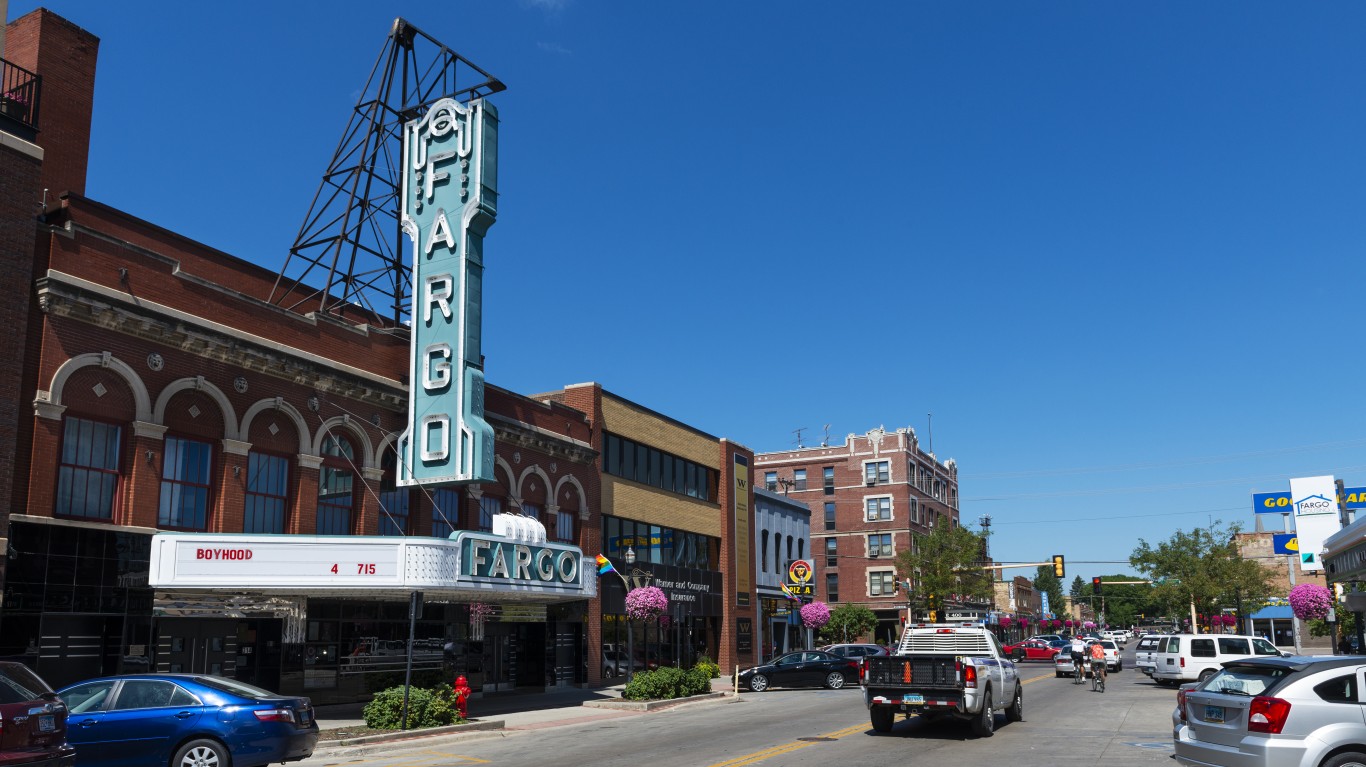
- Population change by 2100: +238.0% (from 125,990 in 2020 to est. 428,966 in 2100)
- Population change by 2050: +78.8% (est. growth to 225,278)
- Current population trend from 2000-2020: moderately increasing
- Median household income: $64,432 (vs. $75,149 nationwide)
- Unemployment rate: 3.6% (vs. 5.3% nationwide)
- Bachelor’s degree attainment rate: 42.4% (vs. 34.3% nationwide)
ALERT: Take This Retirement Quiz Now (Sponsored)
Take the quiz below to get matched with a financial advisor today.
Each advisor has been vetted by SmartAsset and is held to a fiduciary standard to act in your best interests.
Here’s how it works:
1. Answer SmartAsset advisor match quiz
2. Review your pre-screened matches at your leisure. Check out the advisors’ profiles.
3. Speak with advisors at no cost to you. Have an introductory call on the phone or introduction in person and choose whom to work with in the future
Take the retirement quiz right here.
Thank you for reading! Have some feedback for us?
Contact the 24/7 Wall St. editorial team.
